Here, we’ll walk you through the steps How to create a dating app!
Dating apps like Tinder, Hinge, and Bumble have become a big part of how people meet and date today.
These apps have completely changed the way people connect and start relationships, making dating app development a highly sought-after and innovative field in the tech industry.
Introduction to a Dating App
Dating apps have enhanced how people connect and form relationships in today’s digital age.
These platforms provide a convenient and accessible way for individuals to meet potential partners, offering features like matchmaking algorithms, profile customization, and communication tools.
As per demand for online dating grows, so does the opportunity for innovative apps to capture a share of this thriving market.
Understanding dating app development process is key for businesses seeking to launch a successful dating platform.
According to Statista, revenue in online dating market is expected to reach $3.17 billion globally by 2025 and grow at yearly rate (CAGR) of 2.14% from 2025 to 2029, reaching $3.45 billion by 2029.
Mobikul’s dating app development services guide you on how to create a dating app with advanced features and smooth performance.
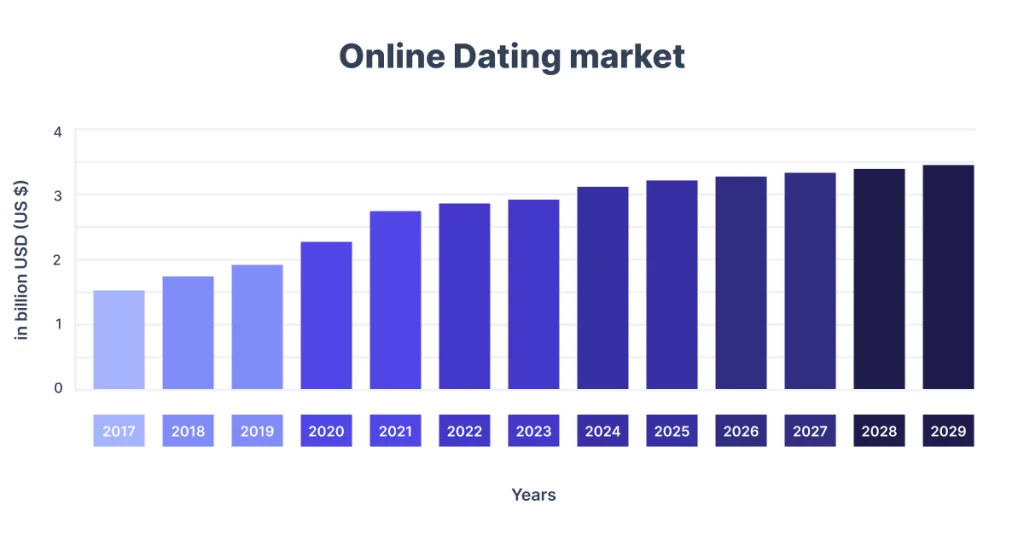
Types of Dating Apps
Dating apps have become a fun way for people to connect, make friends, or find love.
Here’s a simple breakdown of different types:
1) Location-Based Apps
These apps help you meet people near you. They use your phone’s GPS to find matches in your area. Want someone just a few blocks away? Or maybe someone from a different country? You can choose! A popular example is Tinder.
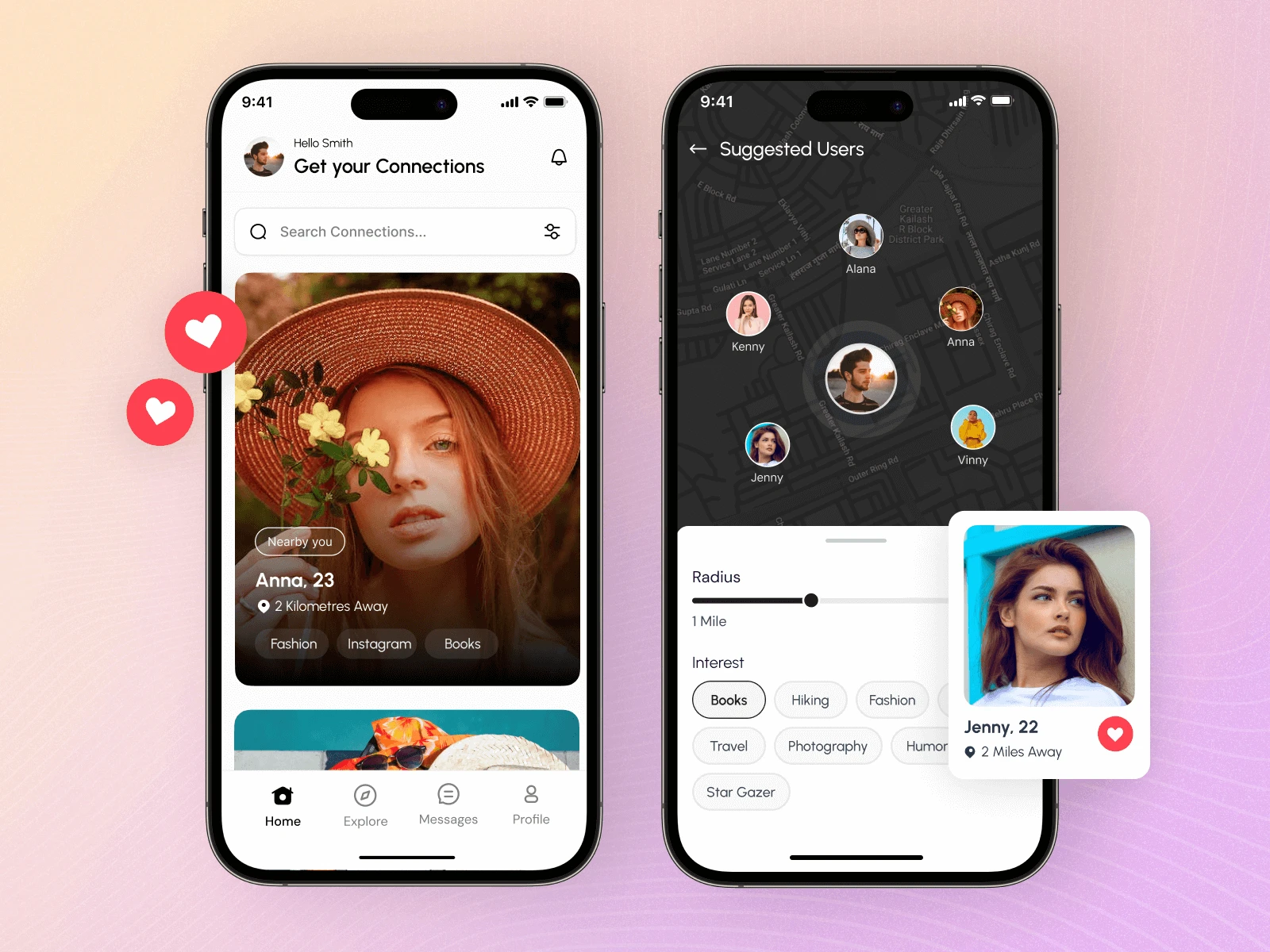
2) Question-Based Apps
These apps ask you questions about your hobbies, likes, and what you want in a partner. Based on your answers, they connect you with people who have similar interests. eHarmony is one example where matching is all about knowing more about you first.
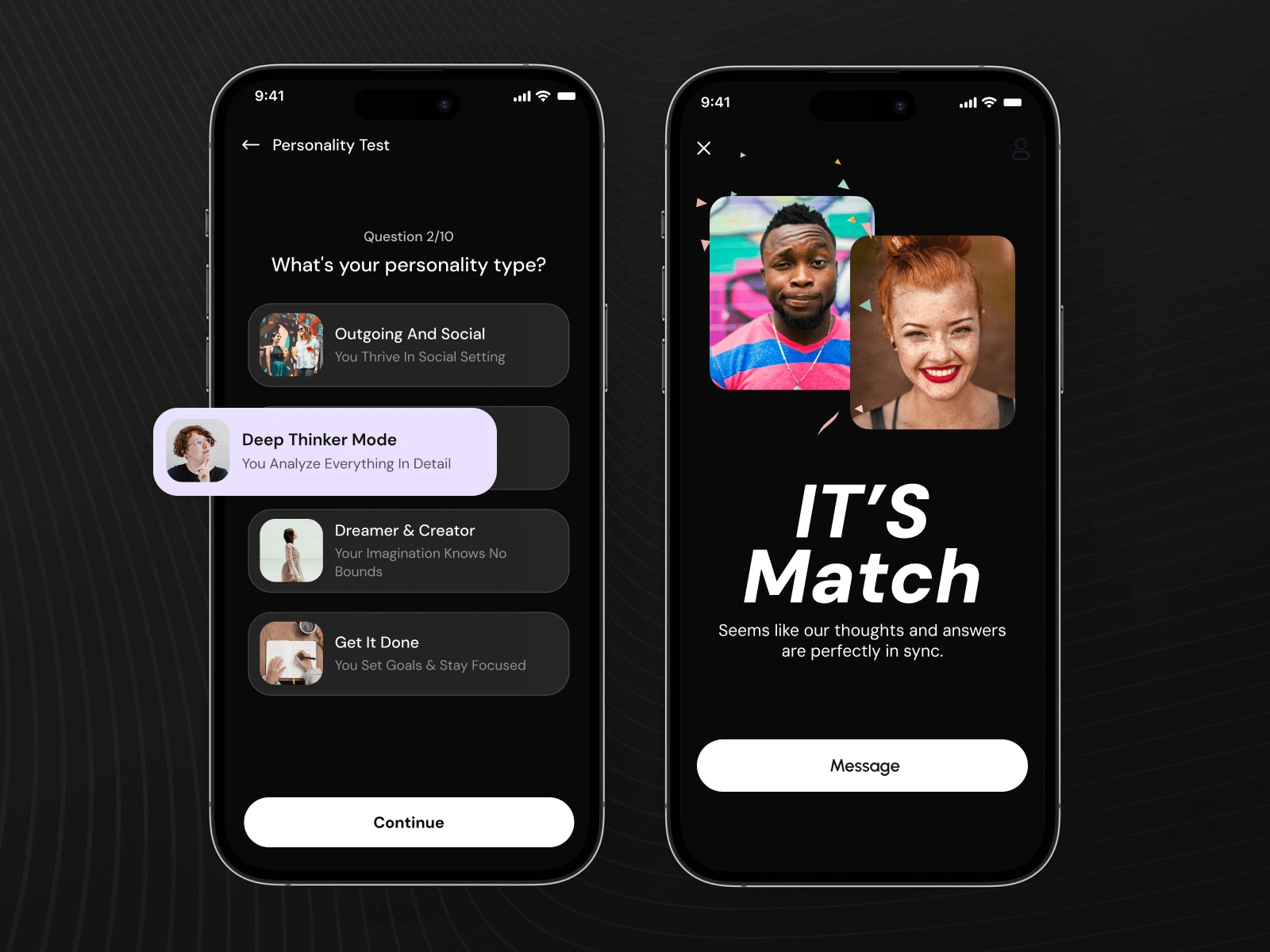
3) Traditional Apps
These apps are like online catalogs where you can scroll through profiles and choose who to message. They often work along with a website. OkCupid is a great example of this type.
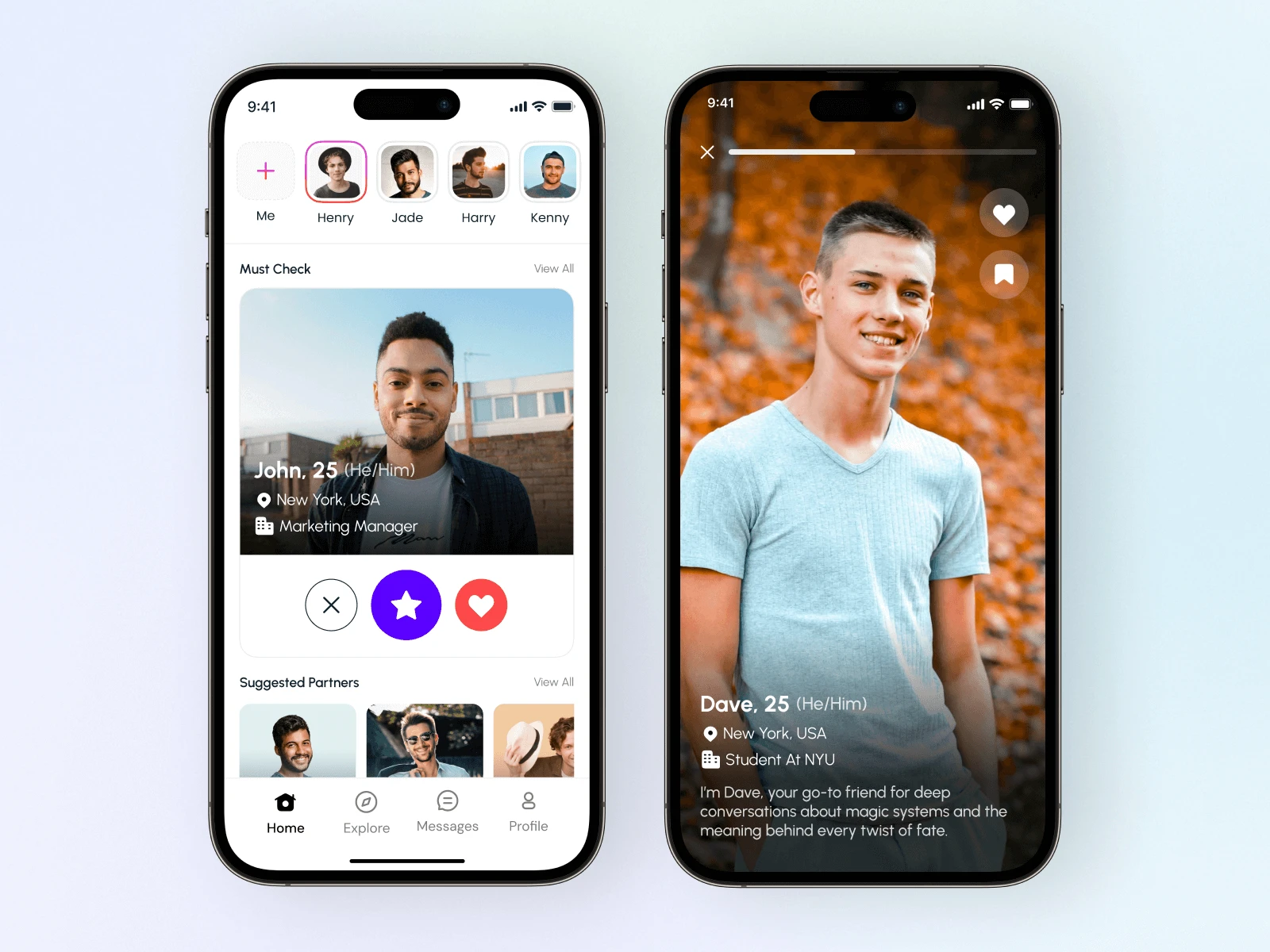
4) Niche-Focused Apps
These apps connect people with specific interests. Whether you love pets, jogging, or are a vegetarian, there’s an app for you! For example, Veggly is a dating app for plant-based eaters.
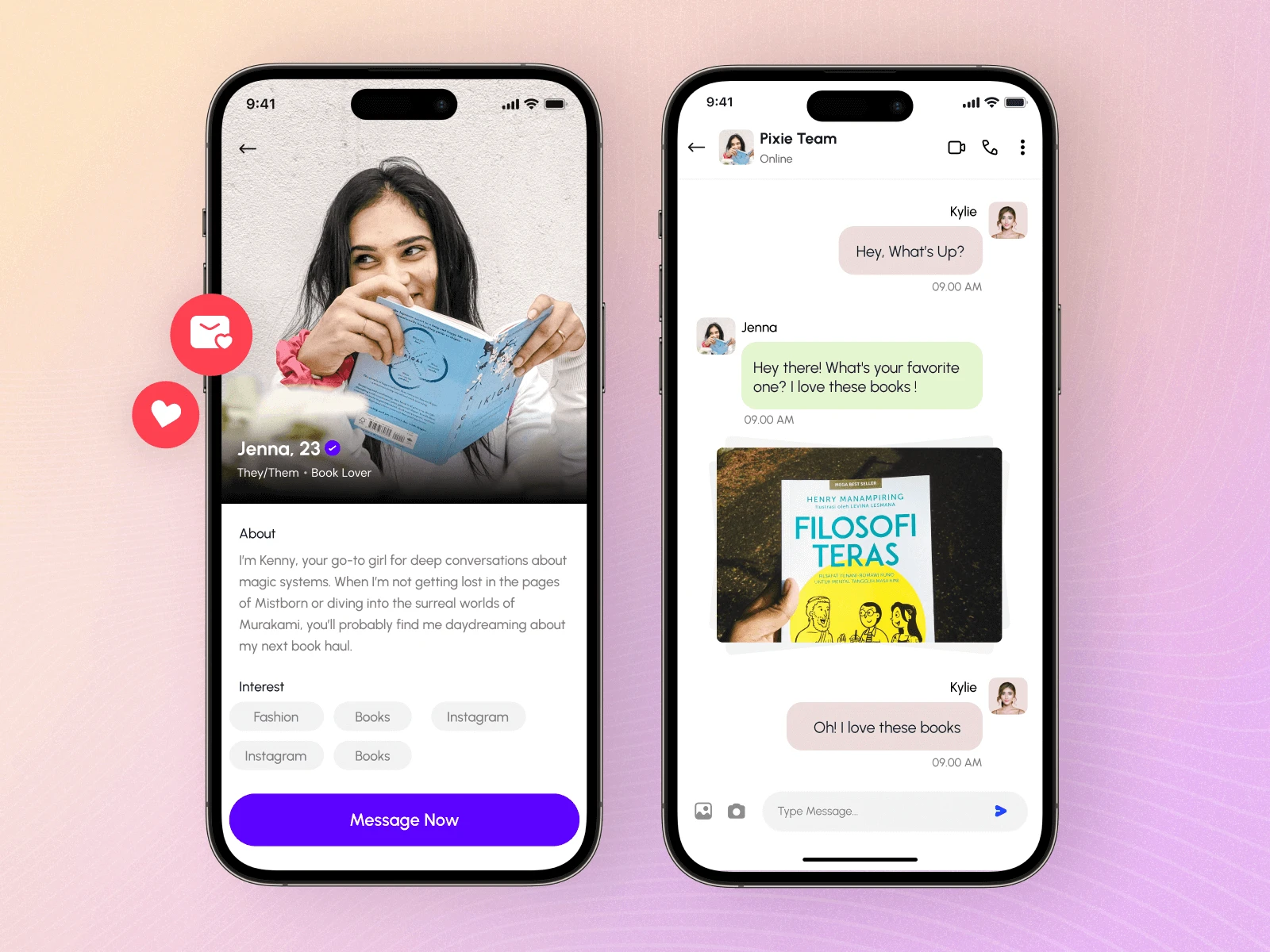
Features of Dating APP
Core Features of dating app
Dating apps are now a big part of how people meet and build relationships. They make it easy for users to connect by matching them based on similar interests and likes.
Whether you’re developing a dating app for Social Networking enthusiasts or targeting niche markets, the core features are essential for successful dating app development.
- User Profiles:
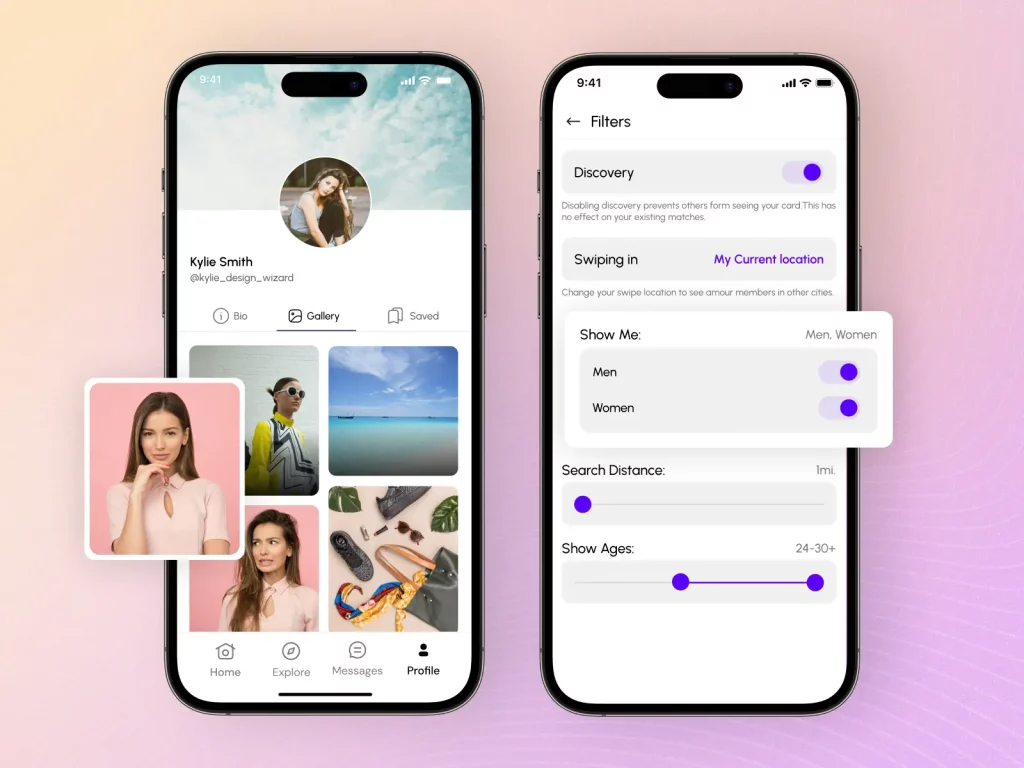
- Profile Creation: Allow users to create profiles with basic information, photos, and interests.
- Swiping Mechanic: Implement a swiping feature for users to like or dislike profiles.
- Matching Algorithms:
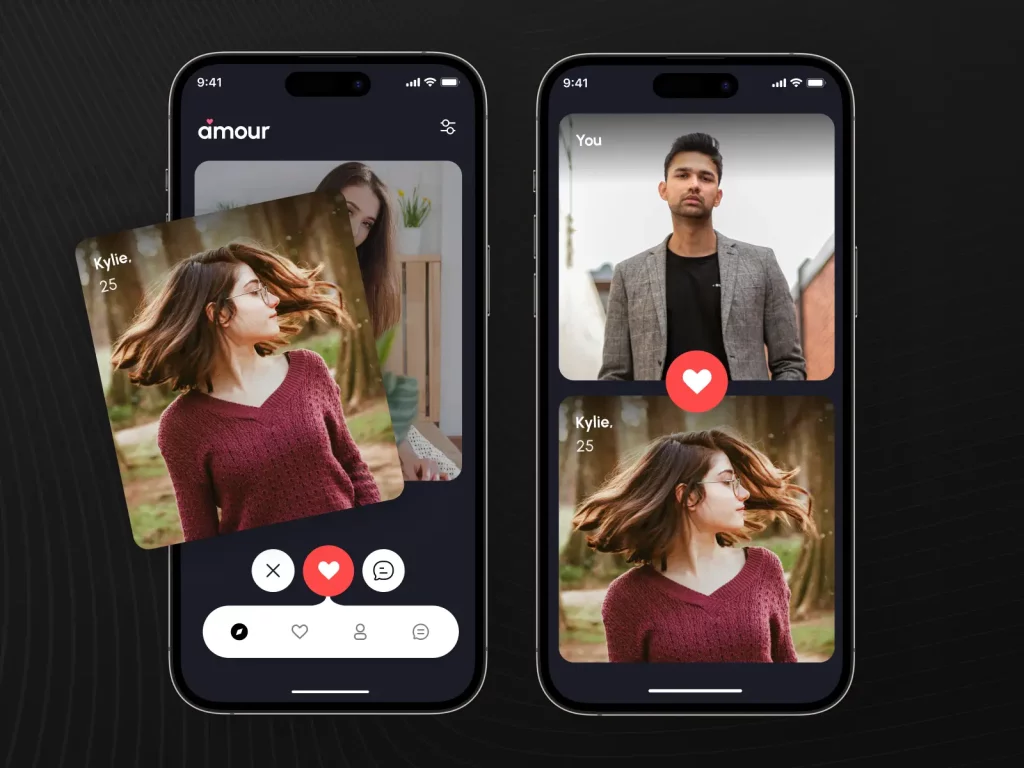
- Compatibility Matching: Use algorithms to match users based on preferences and interests.
- Location-Based Matching: Enable matches based on geographical proximity.
- Chat and Messaging:
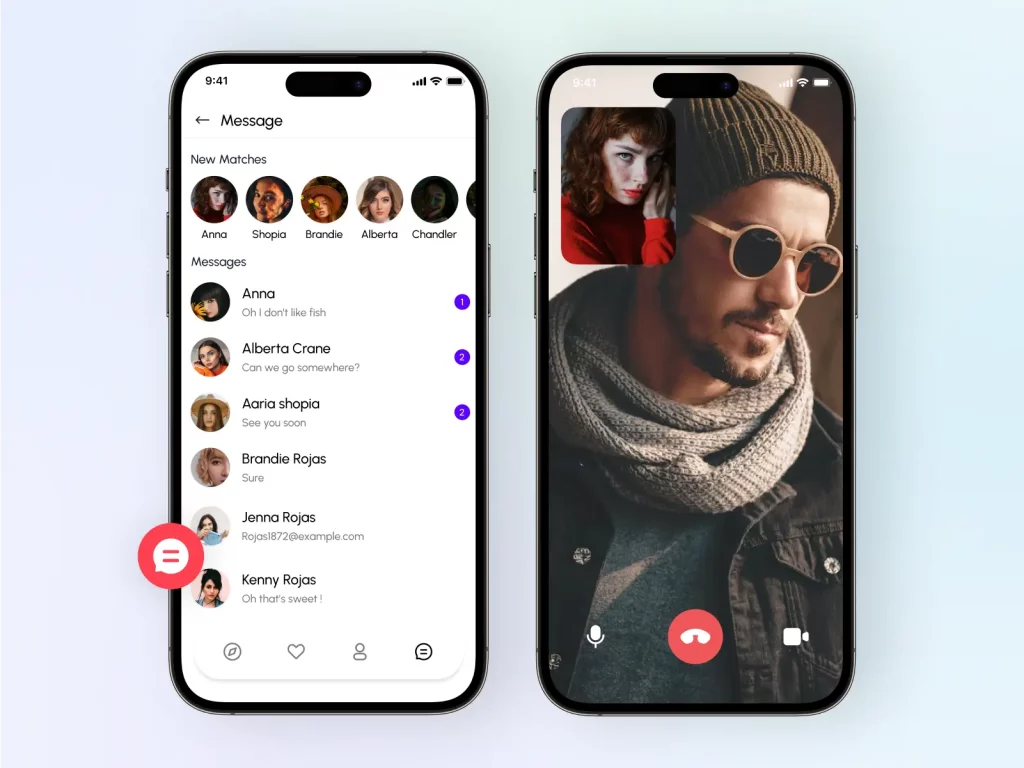
- Real-Time Messaging: Provide instant messaging for text, photos, and emojis.
- Voice and Video Calling: Integrate voice and video calling for deeper connections.
- Push Notifications:
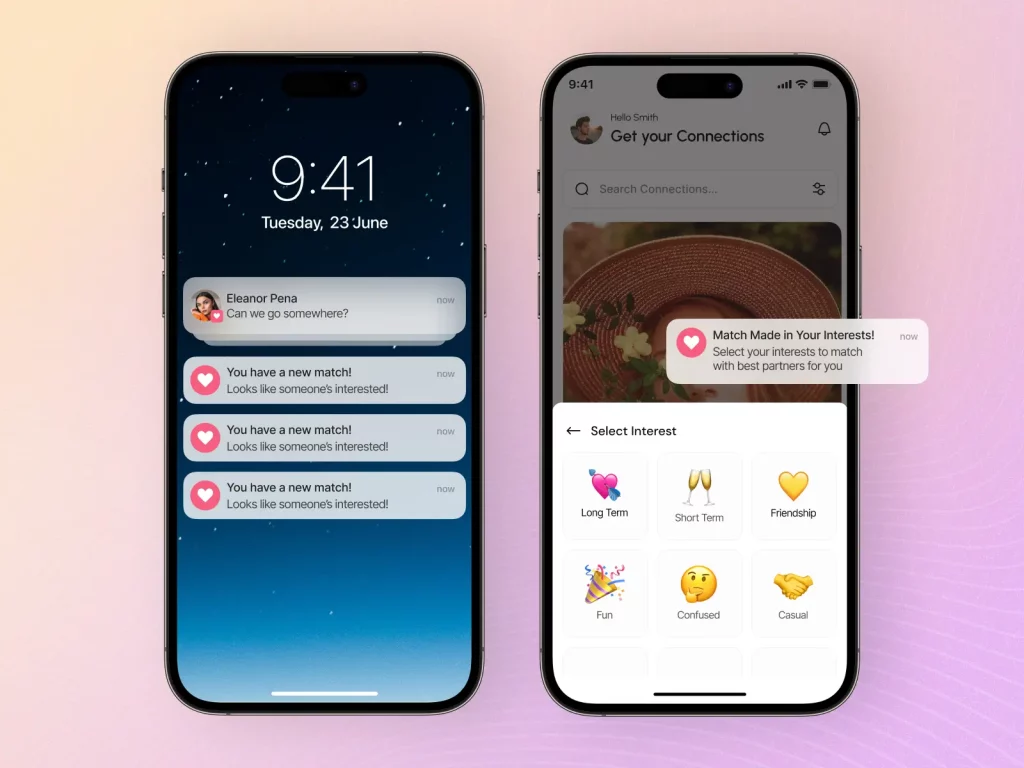
- Match Notifications: Notify users when they have a match.
- Activity Updates: Send notifications for new likes, messages, and app updates.
- Gamification:

- Badges and Rewards: Introduce gamification elements to keep users engaged.
- Streaks and Challenges: Encourage regular app use with streaks and challenges.
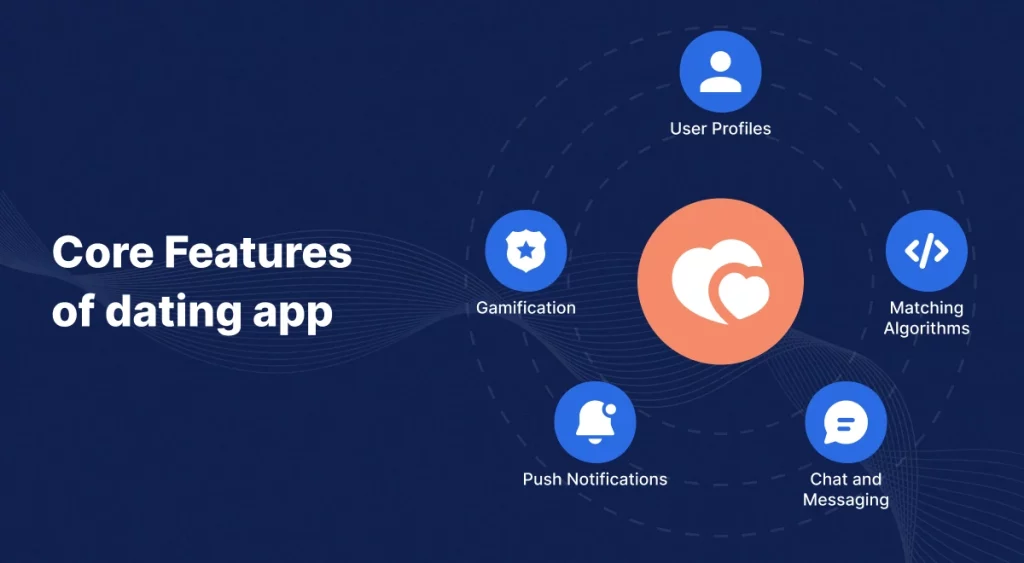
Advanced Features of dating app
If you’re looking to develop a dating app, consider Cross-Platform App Development or Flutter App Development to ensure a smooth and consistent user experience across devices.
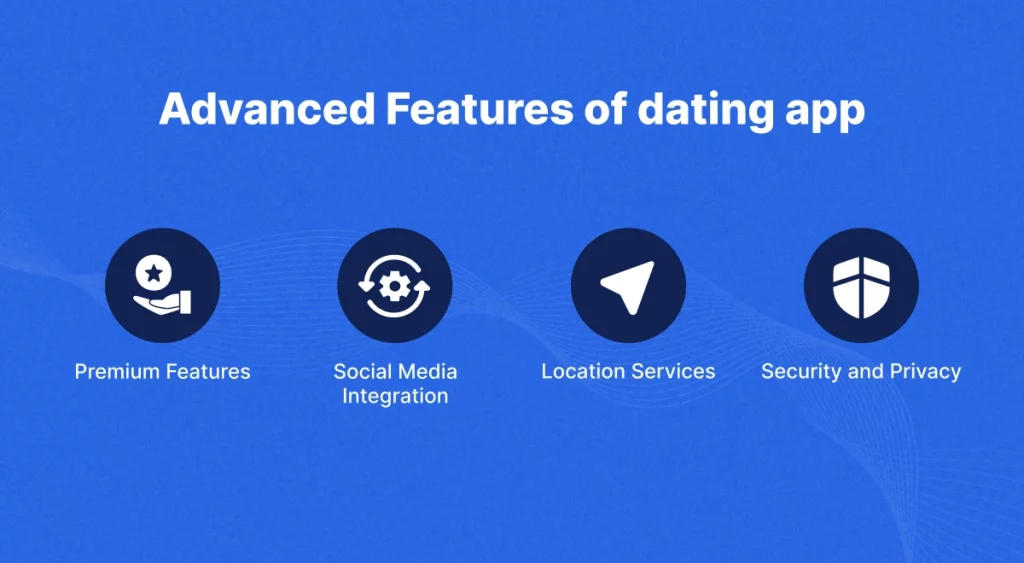
- Premium Features:
- Premium Subscription: Offer premium features like unlimited swipes, advanced filtering, and profile boosts.
- In-App Purchases: Allow users to purchase virtual gifts, badges, or other premium content.
- Social Media Integration:
- Login via Social Media: Enable sign-up through social media platforms for ease of use.
- Share Profiles: Allow users to share their profiles on social media platforms.
- Location Services:
- GPS Tracking: Use GPS to find nearby users and suggest matches.
- Event-Based Matching: Create features for matching users at specific events or locations.
- Security and Privacy:
- Two-Factor Authentication: Ensure secure logins with two-factor authentication.
- Privacy Settings: Allow users to control their privacy settings and data sharing.
How to Create a Dating App in 6 Easy Steps:
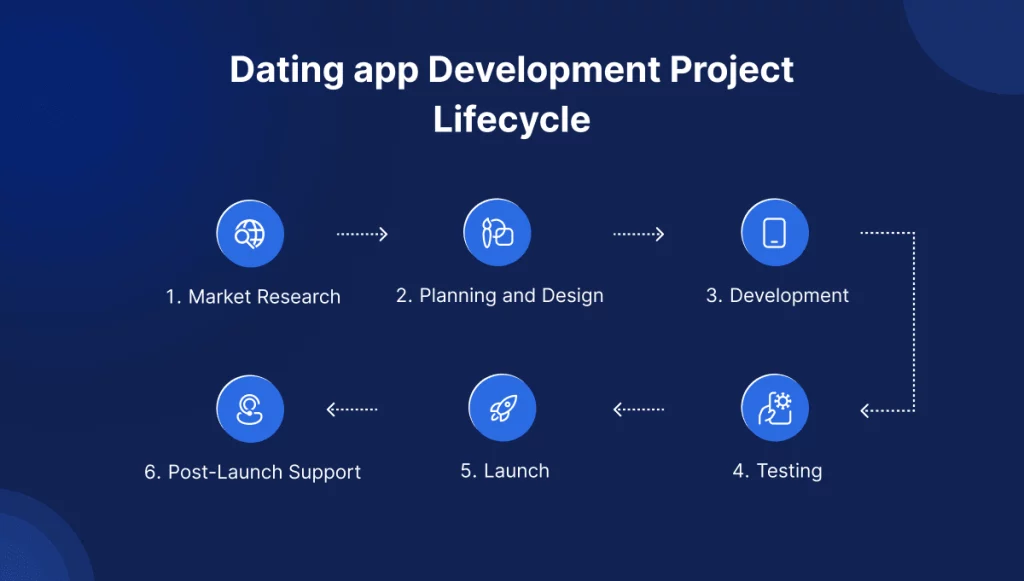
- Market Research:
- Analyze the market demand and competitor apps.
- Identify your target audience and unique selling proposition (USP).
- Planning and Design:
- Define the app’s features, user flow, and monetization strategy.
- Create wireframes and UI/UX designs for the app.
- Development:
- Choose the right technology stack for efficient dating app development (e.g., React Native, Flutter, or Swift).
- Develop the frontend and backend, including APIs and database integration.
- Testing:
- Conduct thorough testing for bugs, performance, and user experience.
- Ensure the app is secure and compliant with data protection regulations.
- Launch:
- Submit the app to the App Store and Google Play Store.
- Implement a marketing strategy to attract users.
- Post-Launch Support:
- Monitor app performance and user feedback.
- Regularly update the app with new features and improvements.
With custom dating app development, we ensure your platform includes modern features like real-time messaging and AI-powered matching.
Benefits of Using Dating Apps
Dating apps have revolutionized the way people connect, offering a multitude of advantages for users and the community at large.
Effective app development plays a crucial role in ensuring seamless user experiences on dating platforms.
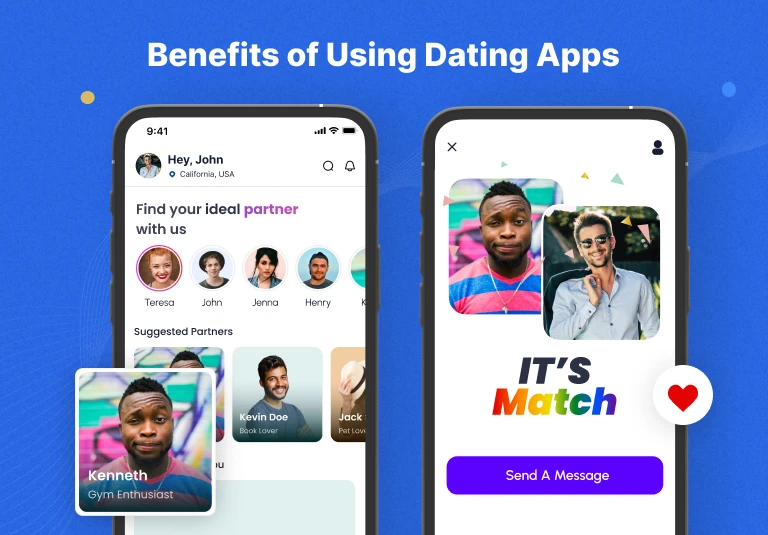
Explore the benefits of dating app development and how to create a dating app that maximizes user engagement and matchmaking efficiency.
- Ease of Connection: Dating apps make it easier for people to connect with like-minded individuals.
- Diverse Options: Users can explore a wider range of potential partners beyond their immediate social circle.
- Inclusivity: Many dating apps cater to specific communities, such as LGBTQ+ or religious groups, promoting inclusivity and acceptance.
- Mental Health: For some, dating apps provide a low-pressure way to socialize and meet new people, which can improve mental well-being.
How Much Does it Cost to Develop a Dating App?
The cost of developing a dating app can vary widely depending on several factors, including the complexity of the app, the features included.
Here’s a detailed breakdown of the key factors that influence the cost:
1) App Complexity and Features:
- Basic Features: A simple dating app with basic functionalities like user profiles, chat, and matching algorithms can cost anywhere from $20,000 to $50,000.
- Advanced Features: Additional features such as video calls, geolocation, social media integration, and advanced matching algorithms can increase the cost to $50,000 to $150,000.
- Premium Features: For apps with premium features like subscription plans, in-app purchases, and AI-driven matchmaking, the cost can range from $150,000 to $300,000 or more.
2) Development Team and Location:
- In-House Development: Developing the app in-house with a dedicated team can be more expensive, with costs ranging from $100,000 to $500,000 or more, depending on the team’s size and expertise.
- Outsourcing to Development Agencies: Hiring a development agency can vary significantly based on their location. For example, agencies in Eastern Europe or India might charge $20,000 to $100,000, while those in the U.S. or Western Europe could charge $50,000 to $300,000.
3) Platforms and Cross-Platform Development:
- Single Platform (iOS or Android): Developing for a single platform typically costs less, with estimates ranging from $20,000 to $100,000.
- Cross-Platform Development: Using frameworks like React Native or Flutter to develop for both iOS and Android can cost between $50,000 and $200,000.
4) Design and User Experience:
- Basic Design: A straightforward design with minimal customization can cost $5,000 to $15,000.
- Custom UI/UX Design: Investing in a custom user interface and experience design can increase costs to $20,000 to $50,000 or more.
- You can review the dating app design on dribble.
5) Backend Development and Server Costs:
- Basic Backend: A simple backend with basic database management and server setup can cost $10,000 to $30,000.
- Advanced Backend: For apps requiring complex server-side logic, data analytics, and scalability, the cost can range from $30,000 to $100,000.
6) Testing and Quality Assurance:
- Basic Testing: Conducting basic testing to ensure the app works as intended can cost $5,000 to $15,000.
- Comprehensive Testing: Including user acceptance testing, performance testing, and security testing can increase costs to $20,000 to $50,000.
7) Maintenance and Updates:
- Ongoing Maintenance: Post-launch maintenance, including bug fixes, updates, and support, can cost 15-20% of the initial development cost annually.
Check out this detailed blog to learn the Cost of developing a Dating App.
Estimated Total Cost:
- High-End Estimate: For a feature-rich, advanced dating app with premium features and cross-platform compatibility, the cost could range from $150,000 to $300,000 or more.
- Low-End Estimate: For a basic dating app with minimal features, the cost could range from $ 20,000 to $50,000.
- Mid-Range Estimate: For a moderately complex app with standard features, the cost could range from $50,000 to $150,000.
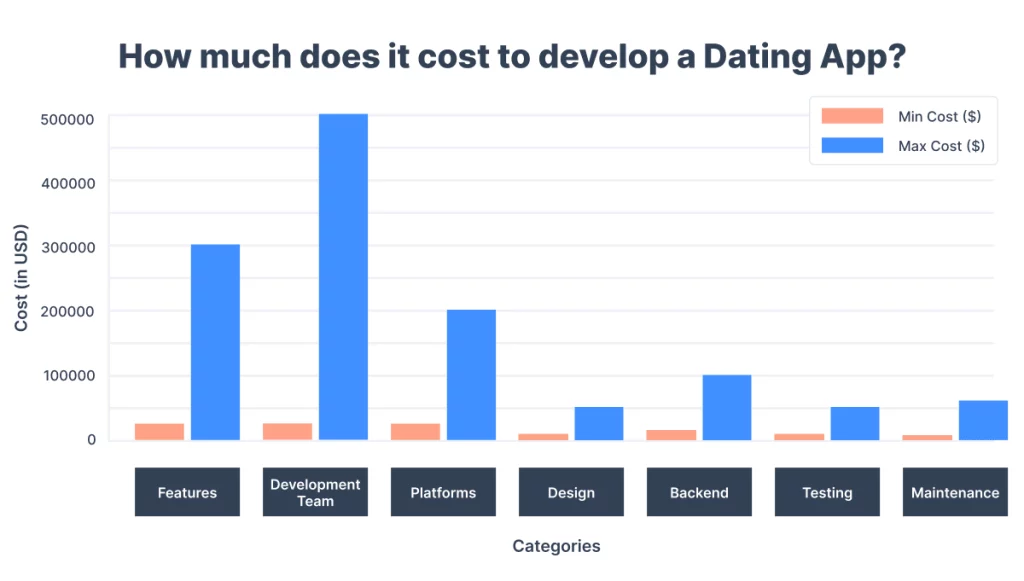
Dating App Monetization Strategies
- Subscription Model:
- Charge users a monthly or annual fee for premium features.
- In-App Purchases:
- Offer virtual goods, such as coins, gifts, or profile boosts that users can purchase.
- Advertisements:
- Display non-intrusive ads within the app, or offer ad-free experiences for premium users.
- Premium Features:
- Offer exclusive features like unlimited swipes, advanced filtering, or priority matching for a fee.
Professional Dating App Development
Choosing a professional dating app development company is essential for creating a secure, scalable, and user-friendly app.
Company with experience in developing dating apps, expertise in the latest technologies, and a portfolio of successful projects.
What to Look for:
- Proven experience in developing dating apps
- Expertise in modern technologies like React Native, Flutter, and AI-based matching algorithms
- A strong portfolio showcasing successful projects
- Ability to deliver robust backend systems and intuitive user interfaces
- Focus on security, performance, and scalability
- Support for maintenance and future updates
A reliable development partner ensures your dating app meets market demands and provides a seamless experience for users.
Dating App Trends
- AI and Machine Learning: Enhance matching algorithms with AI to improve compatibility.
- Augmented Reality (AR): Introduce AR features for more engaging user experiences.
- Sustainability and Ethics: Focus on ethical practices, data privacy, and sustainable development.
- Video and Voice Features: Include video chats and voice calls for better remote communication.
- Data Analytics: Use insights for better app optimization and user retention strategies.
Check out this detailed blog to learn about the latest dating app trends.
Attributes of a Successful Dating App
- High User Retention: Focus on creating a compelling user experience to keep users engaged.
- Strong Community: Foster a positive and inclusive community within the app.
- Continuous Updates: Regularly update the app with new features and improvements based on user feedback.
- Effective Matching Algorithms: Use AI and machine learning for better compatibility and personalized matches
- Multi-Platform Support: Optimize the app for both iOS and Android users.
- Customer Support: Offer responsive in-app support for resolving user concerns quickly
Market and Competitor Research
- Analyze Competitors: Study successful dating apps like Tinder, Bumble, and Hinge to identify their strengths and weaknesses.
- Identify Niche Markets:
- Explore opportunities to create dating apps for specific groups or interests (e.g., pet lovers, gamers, professionals)
- Analyze demand, user behavior, and competition in niche segments
- Understand User Preferences:
- Gather insights on user expectations through surveys or market studies
- Focus on trends that drive engagement and retention
Popular Dating Apps
In the ever-evolving landscape of dating apps, several platforms have stood out, each with its unique approach and features.
Understanding these apps can provide valuable insights for developers looking to enter this competitive space. Let’s delve into some of the most famous dating apps and what makes them successful.
Check out this detailed blog on the most popular dating apps like Tinder and development strategies.
1) Tinder Dating App
Overview:
Tinder is synonymous with the swiping mechanic, a feature that revolutionized the dating app industry. Its simplicity and ease of use have made it a global phenomenon.
Unique Features:
- Swiping Mechanic: A simple left or right swipe to indicate interest.
- Location-Based Matching: Connects users based on their proximity.
Success Factors:
- User-Friendly Interface: Minimalistic design that appeals to a broad audience.
- Scalability: Successfully scaled to millions of users worldwide.
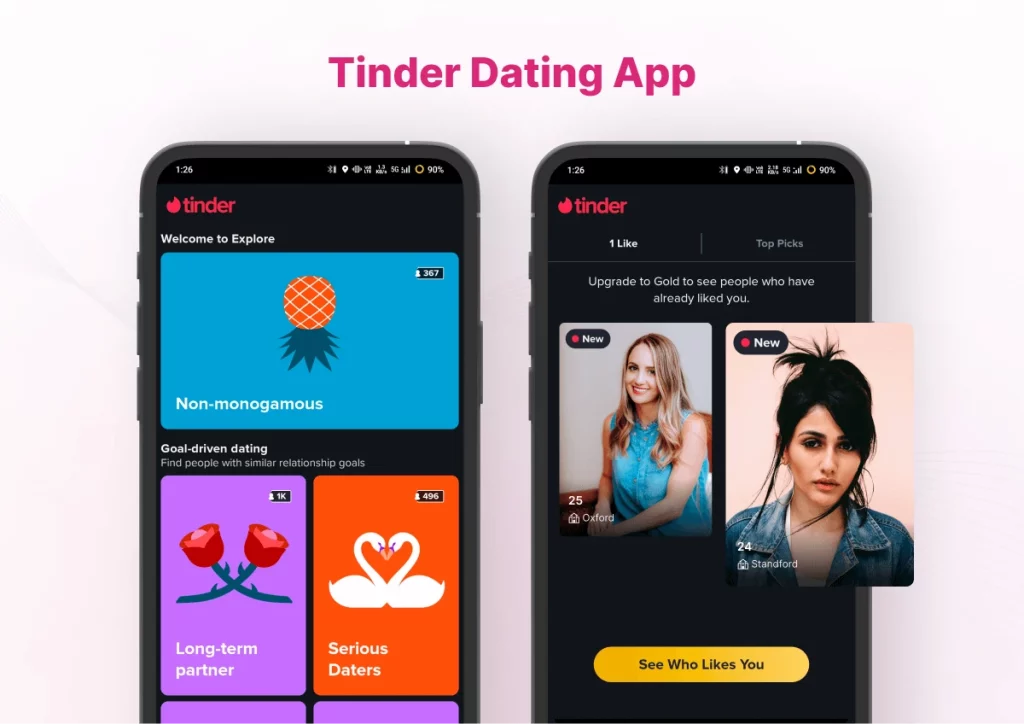
Lessons for Developers:
- Focus on simplicity and ease of use.
- Leverage location services to enhance user experience.
2) Bumble: Women-First Approach
Overview:
Bumble introduced a women-first approach, where women have to make the first move, setting it apart from other dating apps.
Unique Features:
- Women-First Swipe: Empowers women by requiring them to initiate conversations.
- Bumble BFF and Bumble Date: Expansions into friendship and dating niches.
Success Factors:
- Innovative Business Model: Differentiation through gender-specific features.
- Community Engagement: Fosters a positive and inclusive community.
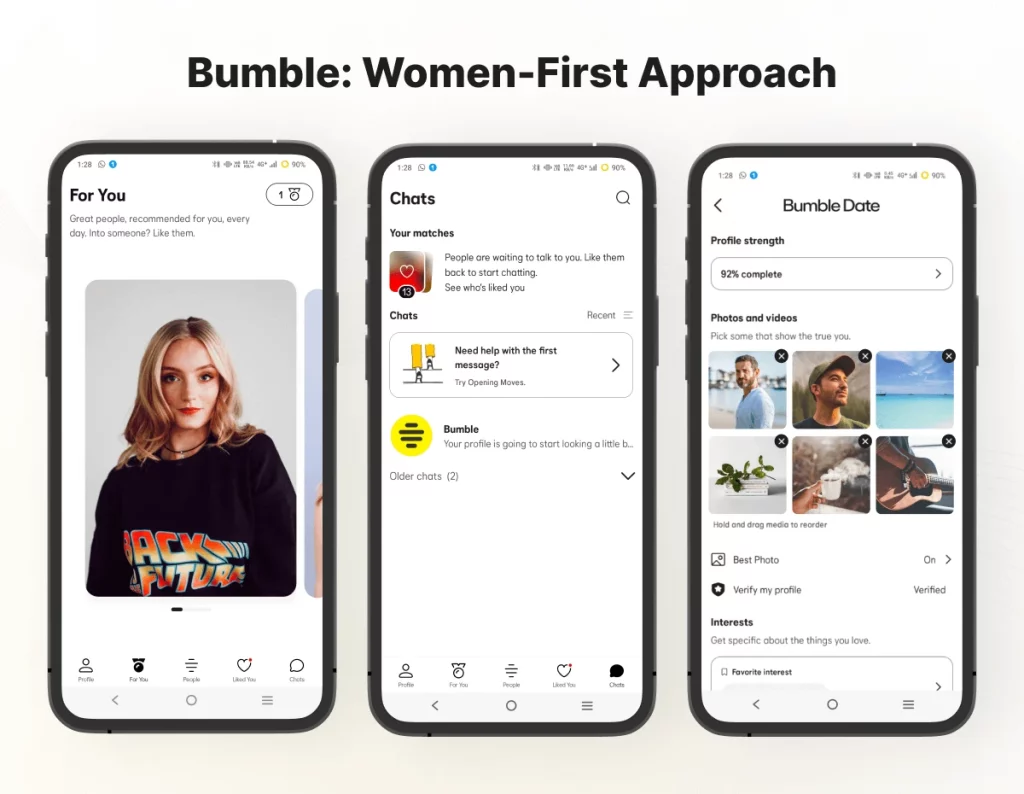
Lessons for Developers:
- Consider niche markets and unique value propositions.
- Expand services to cater to diverse user needs.
3) Hinge: Serious Relationships
Overview:
Hinge is designed for those seeking serious relationships, offering a more thoughtful approach to dating.
Unique Features:
- Compatibility Matching: Focuses on long-term compatibility.
- Friends Introduction: Allows friends to introduce potential matches.
Success Factors:
- Targeted Audience: Appeals to users looking for meaningful connections.
- Trust and Safety: Emphasizes safety and genuine interactions.
Lessons for Developers:
- Tailor features to specific user intentions (e.g., serious relationships).
- Prioritize trust and safety in app design.
4) OkCupid: Detailed Questionnaires
Overview:
OkCupid is known for its detailed questionnaires, aiming to match users based on deep interests and values.
Unique Features:
- Comprehensive Questionnaires: In-depth questions to understand user preferences.
- Compatibility Score: Matches users based on questionnaire responses.
Success Factors:
- Personalized Matching: High focus on compatibility and user preferences.
- Data-Driven Approach: Uses user data effectively for matching.
Lessons for Developers:
- Invest in robust matching algorithms.
- Use data analytics to enhance user experience.
Additional Insights for Dating App Development
Business Models:
- Premium Features: Tinder’s Super Likes and Boosts, Bumble’s paid subscriptions.
- Monetization Strategies: In-app purchases, premium memberships, and ads.
Technological Aspects:
- Matching Algorithms: Complexity and effectiveness in pairing users.
- Security Measures: Ensuring data privacy and user safety.
Cultural Impact:
- Changing Dating Norms: Influence on Modern Dating Behaviors.
- Global Variations: Adaptation to different cultures and regions.
Future Trends:
- Emerging Technologies: AI, AR, and VR in dating apps.
- Ethical Considerations: Data privacy, security, and user consent.
Design and User Experience:
- Mobile Optimization: Ensuring a smooth experience on mobile devices.
- UI/UX Best Practices: Learning from successful apps’ design principles.
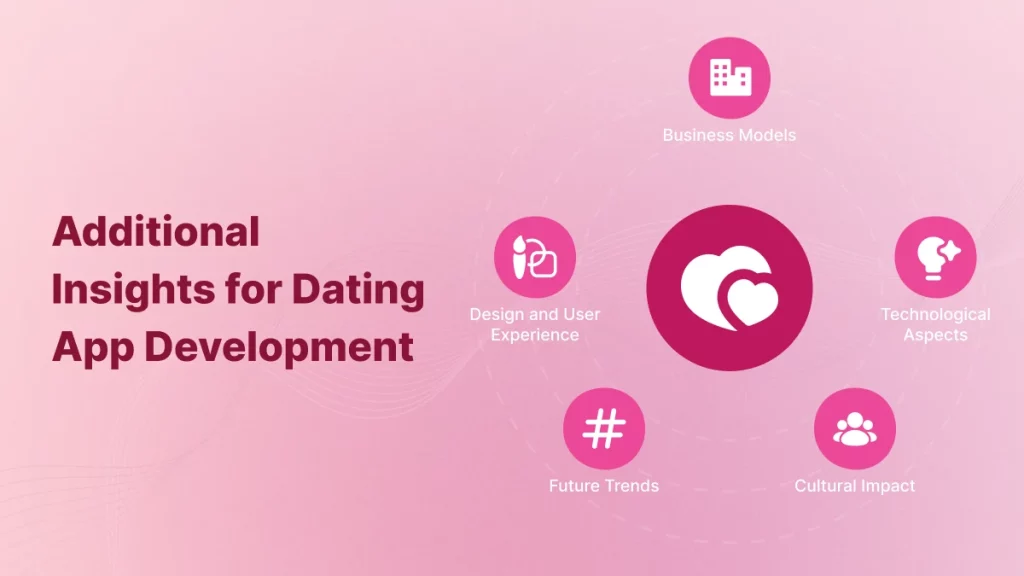
Tips for Dating App Developers:
Creating a successful dating app requires careful attention to several key areas. These lessons will help developers create an app that is user-friendly, engaging, and effective.
1) Invest in Robust Matching Algorithms
Matching algorithms are like the brain of your dating app. They help connect users based on their interests and preferences.
To keep users happy and coming back, these algorithms need to be strong.
Using tools like machine learning can help improve these algorithms over time, making matches more accurate and satisfying for users.
2) Use Data Analytics to Enhance User Experience
Data analytics involves looking at how users interact with your dating app.
By understanding this data, you can make your dating app easier to use and more enjoyable.
For example, if many users are leaving the app after signing up, you might need to simplify the onboarding process.
Always remember to respect user privacy by keeping their data secure and anonymous when possible.
Conclusion
Developing a dating app is a complex but rewarding endeavor.
How to create a dating app by understanding the market, improving user experience, and adding strong features for success.
Whether you’re developing a dating app for Social Networking enthusiasts or you can create a dating app that resonates with users and contributes positively to the community.
Support
We provide a wide range of dating app development services with top-notch features that attract your potential customers. Check out customer reviews on Clutch for insights!
If you require any further assistance, please reach out to us through [email protected] or you can create a ticket as well.
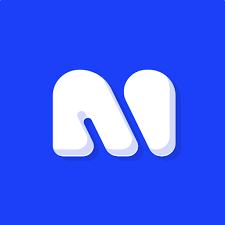
2 comments